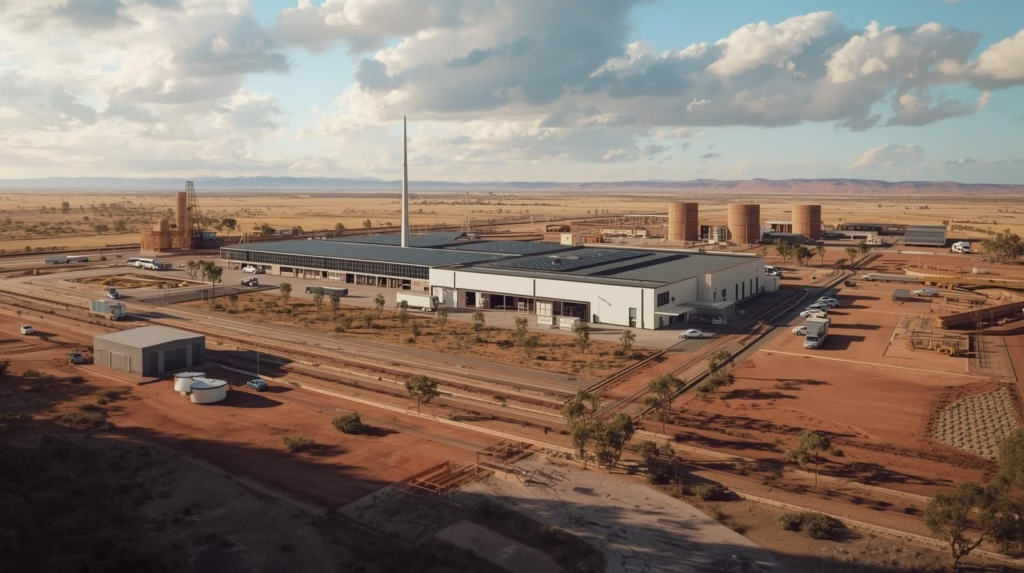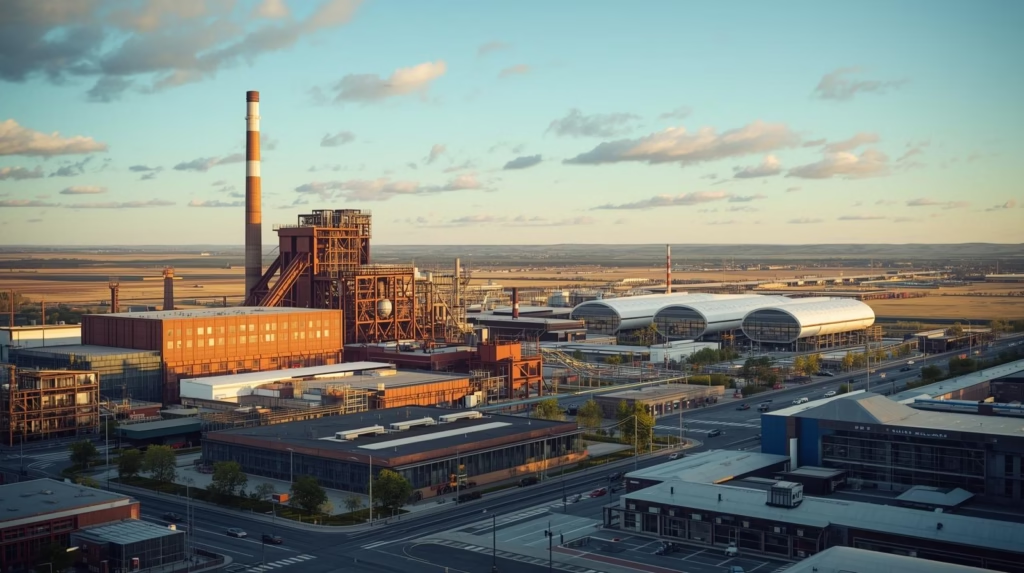Australia’s property market has always had a fascination with bargains for the Investors. When the median house price in Sydney hovers around $1.5 million and Melbourne sits near $950,000, the idea of owning an entire house for under $300,000 feels like the ultimate loophole.
But here’s the uncomfortable truth: cheap does not equal good value.
According to a recent BrokerNews report, there are still 43 suburbs nationwide with median house prices below $300,000—stretching from South Australia’s Coober Pedy, where homes average a shocking $77,500, to regional hubs like Broken Hill, Port Augusta, and Blackwater. On paper, they look irresistible. In practice, they’re dangerous.
In 2025, our review of these 43 “affordable” markets revealed a confronting pattern: only five could be considered investment-grade. The other 38? They’re cheap for a reason—shrinking populations, decaying infrastructure, and economies handcuffed to industries in structural decline. Some are towns literally running out of residents, where yields look high until you realise no one’s lining up to rent or buy.
This is where investors get burnt. The glossy headline—“Homes under $300K still exist in Australia”—sounds like opportunity. But if you look deeper, most of these towns aren’t the next boom suburbs. They’re cautionary tales.
For serious investors, the lesson is clear: the sub-$300K market is not a treasure chest waiting to be unlocked. It’s a minefield. And if you’re tempted by the price tag, you need to ask yourself whether you’re buying a bargain—or just catching a falling knife.
Read moreInvestors How We Approached The Research (short, practical overview)
We didn’t rely on charm and glossy agent photos. The review combined quantitative trends and on-the-ground intelligence: population projections, local employment data, rental vacancy and yield trends, announced infrastructure or private investment pipelines, commodity forecasts where relevant, and conversations with local agents and council planning documents. The aim was plain: filter towns that have plausible, durable tenant demand and multi-year catalysts from those that merely trade on nostalgia or a headline price.
No secret sauce. Just data, local intel, and a strong bias for markets where jobs and families—not just short-term contractors—create sustained demand.
Investors Should Follow Simple Economics
A low median price signals either an opportunity or a structural problem. The difference matters.
- Opportunity: A town with improving employment, renewed infrastructure, or new industry that’s not yet fully priced in. Example: a regional centre pivoting into renewable energy.
- Problem: Declining population, aging demographics, single-employer dependence, or geographic isolation that keeps buyer pools tiny.
Owning a $200K house in a shrinking market can cost you more in vacancy, repairs, and capital loss than a $600K property in a growth corridor. Don’t let ‘cheap’ blind you to illiquidity, operational headaches, and long tail holding risk.
The five markets that survived scrutiny (what makes them different)
From the 43 sub-$300K markets, five stood out because they combine yield with plausible structural drivers: Port Augusta (SA), Cloncurry (QLD), Whyalla Stuart (SA), Roxby Downs (SA), and Blackwater (QLD). Each carries different risk profiles—some growth, some yield, some speculative. Here’s the investor-level breakdown.
Port Augusta, SA — Renewable energy + transition upside
Median: $258,750 | Gross yields: 8–10% | Profile: Growth + yield
Port Augusta is the clearest example of a low-cost market with real structural change. The town has shifted from reliance on coal to becoming a renewable energy precinct—solar, battery storage, and hydrogen projects are drawing investment, skills and families rather than FIFO labour.
Why this matters: government and private capital in renewables create permanent jobs (construction and long-term operations), stimulate local services, and tighten rental markets. Practical investor notes: target 3-bed homes within 2km of industrial/precinct upgrades; budget $15K–$25K to modernise kitchens, flooring and cooling. Expect net yields of 6–7% and conservative capital growth of 3–5% p.a. to 2030 if projects proceed.
Risks: policy changes, project delays, and the standard regional liquidity problem.

Cloncurry, QLD — Copper exposure in an electrifying world
Median: $215,000 | Gross yields: 7–9% | Profile: Commodity-linked growth
Cloncurry benefits from copper demand tied to electrification and EVs. The town has established processing infrastructure and multiple operators—less chance of a single-employer collapse. The Eva Copper project is frequently cited as transformative for the region.
Why this matters: commodity demand can fuel wages, housing demand and infrastructure. Investor play: buy low-maintenance brick homes near town centre; ensure aircon and secure parking (miners pay for practical features). Expect volatility—good macro copper prices can create strong returns; a slump can flatten values.
Risks: copper price swings and project timeline delays.

Whyalla Stuart, SA — High yields, execution risk
Median: $208,000 | Gross yields: 9–11% | Profile: Yield play
Whyalla’s yields are attractive because of its industrial base (steel) and planned hydrogen projects. But the story is conditional: if the hydrogen plant and steelworks stabilisation proceed, demand strengthens; if not, high yields may evaporate into vacancy.
Why this matters: yield today does not guarantee capital growth tomorrow. If you’re buying Whyalla for cash flow, buy the best property you can—quality attracts longer-term tenants and reduces downtime.
Risks: project owner insolvency, failure to deliver renewable plans, demographic drift.

Roxby Downs, SA — Company town exposure (BHP/Olympic Dam)
Median: $220,000 | Gross yields: 6–8% | Profile: Single-employer bet
Roxby Downs is a purpose-built town for Olympic Dam. Good infrastructure, predictable workforce needs, and a long mine life make it functional—but values hinge on BHP’s expansion decisions.
Why this matters: company towns work if the company commits to long-term operations and expansion. Investor play: expect steady rental markets but only material capital upside if expansion is approved.
Risks: strategic corporate changes, commodity pricing.

Blackwater, QLD — Boom-bust coal timing play
Median: $220,000 | Gross yields: 10–12% (boom) | Profile: High-risk cyclical
Blackwater is a classic metallurgical coal town—high yields in booms, painful busts. For investors who can buy low, hold through cycles and access short windows for sale, returns can be strong. For everyone else, it’s a gamble.
Risks: policy headwinds to coal, demand shifts, extended vacancy in busts.
Why the other 38 suburbs failed: common fatal flaws
The remainder of the 43-strong list share recurring problems:
- Population decline: Less demand for rentals and fewer buyers when you want to exit.
- Single-industry dependence: Mines, mills, or farming towns with no economic diversification. When the employer pivots, so does your cash flow.
- Aging stock + infrastructure neglect: Old houses, rising maintenance, and weak local services push tenants away.
- Isolation: Long distances to markets, education and healthcare deter families and skilled workers.
- Speculative hype without pipeline reality: Announced projects that never reach financial close.
Examples from the failed group include Coober Pedy (extreme climate and falling opal demand), Kambalda (nickel oversupply and corporate exits), and multiple agricultural towns where drought and mechanisation have hollowed local economies.
In short: low prices there are symptoms of structural decline, not bargain signals.
Investors Here is a Practical portfolio rules for sub-$300K investing
If you’re still reading and thinking “I can make this work,” good. But have rules. These aren’t cute suggestions—ignore them and you’ll regret it.
- Limit portfolio exposure. Keep sub-$300K allocations conservative (recommendations vary: 10–30% of overall property portfolio depending on risk appetite).
- Hold long enough. Regional recovery timelines are measured in 5–10 years, not months.
- Cash buffers are non-negotiable. Six months of expenses minimum; 12 months if you own in cycling mining towns.
- Buy the best asset in the worst town. Top-quality, low-maintenance homes outperform in weak markets.
- Local management only. Expect 7–9% management fees for professional regional operators. Remote self-management fails.
- Exit criteria up front. If population declines accelerate or jobs vanish, have a plan—and the discipline—to sell.
- Renovation budget: Allocate 10–15% of purchase price for targeted upgrades that move tenants and rents.
Tax and structure considerations (brief, practical)
- Depreciation & capital works: Older stock has less plant depreciation, but capital works may still apply. Get a quantity surveyor if claiming deductions.
- Interest & gearing: Interest is generally deductible for rental properties—structure loans accordingly with your accountant.
- Negative gearing: Common in regional buys; ensure you can fund shortfalls without distress selling.
- CGT: Hold 12+ months for discount eligibility; timing sales to low-income years can be effective.
- Ownership structure: For most sub-$300K buys, personal ownership is simpler and often cost-efficient. Use trusts only if you have a clear multi-year reason.
Always confirm with a licensed accountant and financial planner—these summaries are educational, not personal tax advice.
Quick operational checklist before you sign
- Visit the town—walk the streets, meet managers, test mobile coverage.
- Check ABS population change and council development plans.
- Confirm local vacancy rates and time-on-market data with two independent agents.
- Inspect council and infrastructure announcements for funded projects (not “aspirational” plans).
- Assess property maintenance access and contractor availability.
- Run worst-case cashflow for 6–12 months of vacancy.
- Confirm realistic resale scenarios—what’s the exit if fundamentals worsen?
If any box fails, that “bargain” is likely a trap.
Generally no—most are value traps. A small number (Port Augusta, Cloncurry, Whyalla Stuart, Roxby Downs, Blackwater) present opportunities but require specialist knowledge and risk tolerance.
Not recommended. These assets suit investors with experience, cash buffers, and appetite for operational complexity.
Some do—particularly Whyalla and boom-time Blackwater. But yields can be volatile and are no substitute for sustainable tenant demand.
Not necessarily. While a low entry price feels like a safe way to “get on the ladder,” most of these sub-$300K towns lack the fundamentals—population growth, strong local economies, infrastructure spending—that drive long-term returns. You might achieve high rental yields on paper, but with limited tenant demand and weak capital growth, you risk tying up money in a property that underperforms. For starter investors, it’s often smarter to aim for growth corridors with proven demand, even if the entry price is higher.
Final verdict — short and honest
Sub-$300K properties in 2025 are mostly traps masquerading as bargains. Out of 43 suburbs, only five pass a realistic test of tenant demand and structural catalysts. Port Augusta and Cloncurry offer the clearest strategic cases (renewables and copper), Whyalla is a yield play, while Roxby Downs and Blackwater are specialist, high-risk positions.
If you’re building long-term wealth, these buys should be the exception in your strategy—not the rule. Do the legwork, budget for volatility, lean on local experts, and never confuse a low price with a safe investment.
Disclaimer: This article is educational and opinion-based, not personal financial or tax advice. Consult licensed professionals (buyer’s agents (like myself – book a meeting), accountants, mortgage brokers, and financial planners) before making investment decisions. Check state/territory regulators and real estate bodies (REBAA, REIWA, REIQ, REISA) for up-to-date market data.
show less